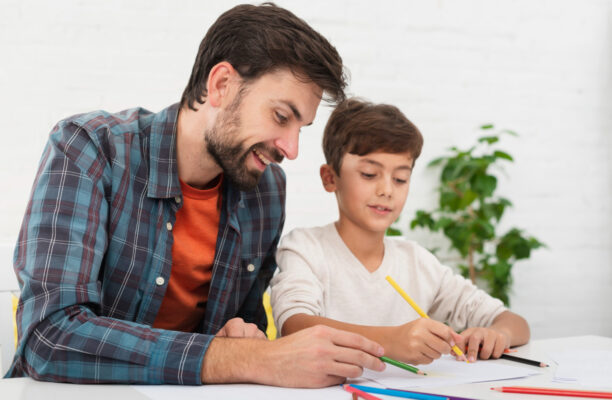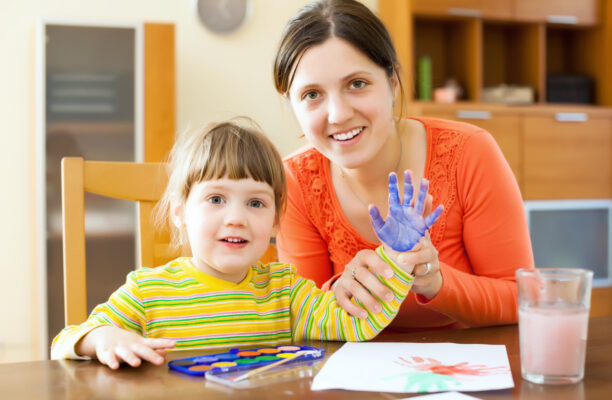Creating a positive learning environment is vital for students to reach their academic potential. This includes providing a comfortable space for studying, along with access to necessary tools and materials.
It can also help to provide support and encouragement for students who are experiencing academic challenges. This can be as simple as listening to them and comforting them.
1. Create a Dedicated Space for Learning
For home schooling students, a dedicated space can help create a sense of structure and routine that helps them focus on learning. Creating a designated spot where they complete their homework, study for tests or online classes is an important step in creating a positive learning environment at home. It also eliminates distractions and can make the experience of learning more enjoyable for kids.
Choosing a location for their study area can be as simple as using a spare room, a nook in the living room or an office in the house. Ideally, the area should be away from family noise and should only be used for studying, so your child will learn to associate it with learning. This can help them get into “study mode” more quickly, which can lead to better performance.
The space should also have a desk or other surface for writing, with enough room to spread out materials. It should also have a comfortable chair that provides adequate back support for sitting for hours at a time. If possible, opt for natural lighting in the space. Studies have shown that this type of lighting helps improve concentration and boosts mood.
Consider allowing your child to personalize their study space with photos, posters or other items that inspire them and remind them of the reasons they are learning. You could even give them a rewards system for keeping their study area clean and organized so they can earn prizes or treats for doing it well.
Providing educational toys and activities that allow your child to apply their knowledge in new ways is another great way to promote positive learning at home. Including items like puzzles, music, art supplies and more can help your children develop problem-solving skills, self-direction and confidence as they discover what they are interested in learning more about.
It is also a good idea to have a few fun books in the reading nook or other learning space in your home that are aligned with your child’s interests. This can encourage them to learn more about their favorite subjects and people.
2. Encourage Open Communication
Creating a positive learning environment isn’t just about having brightly colored walls or posters – it’s about making sure students feel safe and supported. It’s about fostering an atmosphere where students are encouraged to express themselves, take risks and try new things. It’s about having a clear structure and rules in place that help students focus on their work and learn at a healthy pace. It’s about encouraging student-teacher relationships that are based on mutual respect and understanding.
Encourage Open Communication
To encourage open communication between teachers and parents, it’s important to make a habit of reaching out in an informal way at the beginning of each school year. This can be as simple as sending an email introducing yourself or giving each parent a call to get to know them. It gives both parties the opportunity to introduce themselves and set the stage for a productive relationship throughout the year.
It’s also important to give children and parents consistent feedback on their progress. Parents want to know how their child is performing academically and behaviorally, and they want to be able to discuss any concerns or questions they may have. It’s also helpful to provide encouragement and praise whenever possible, as it motivates students to work hard and stay engaged.
When communicating with children, it’s important to do away with distractions and give them your full attention. It’s not easy to have a conversation when you’re distracted, and even the most open-minded of children will become guarded around people who do not treat them with respect or listen to them. It’s also important to have a discussion about feelings, whether it’s anger, love or fear. This helps kids develop a ’feeling vocabulary’ and allows them to express their feelings more clearly.
It’s also important for teachers to remain optimistic and happy in their jobs. Research has shown that when teachers are unhappy or in a bad mood, it trickles down and affects the entire classroom. Taking the time to practice self-care and surround yourself with supportive colleagues can help keep you in a happy, positive state of mind all year long.
3. Set a Good Example
A productive learning environment is an important part of a child’s development. It encourages them to be curious and explore new ideas without feeling worried about judgement or failure. This in turn, helps them develop confidence and self-esteem, which are essential traits for success in life.
A good learning environment starts at home, and parents play a crucial role in creating it. Children look to their parents for guidance and support, so it’s important that they set a positive example in the way they behave and interact with others. Parents can do this by providing a quiet space for studying, establishing clear boundaries and expectations, and encouraging open communication.
Teachers also play an important role in developing a positive learning environment by being consistent, listening to students, and supporting their needs. They can do this by being mindful of their language choices, avoiding using negative words and phrases, and drawing attention to both positive and negative aspects of student responses in class.
It’s also vital that teachers remain positive and optimistic, even when things get tough. Students pick up on any negativity or bad mood, so it’s important that teachers keep their energy high and focus on the positive aspects of student behaviour.
Students also appreciate the feeling of being valued and respected, which can be a crucial aspect in creating a positive learning environment. Students are more likely to participate in class discussions and take risks when they know that their opinions matter. Teachers can promote this by offering students opportunities to be leaders in their classrooms and by involving them in decision making.
In addition to these tips, creating a positive learning environment requires an element of trust. This can be established by ensuring that all students feel safe and supported in the classroom, and it can be further promoted by fostering a sense of community amongst students. For example, teachers can use classroom learning boards to showcase the values they believe in, such as teamwork and kindness. This will help to build a strong and supportive relationship between teacher and student, and will encourage students to learn and thrive.
4. Encourage Active Learning
It’s a well-known fact that students learn best when they are actively involved in their learning. This type of learning is called active learning and can be incorporated into a classroom in many ways. One way that teachers can promote active learning is by encouraging students to participate in class discussions, asking questions, and responding to the opinions of others in a respectful manner. Another way that teachers can encourage active learning is by allowing students to express their ideas through creative projects and presentations.
Getting plenty of exercise is not only good for kids’ health, it can also help them focus better at school. Studies show that kids who get regular physical activity have better test scores and grades than those who don’t. Encourage your child to get some exercise in the morning or before they begin homework or studying at home. And don’t forget to praise them for their efforts. This will give them a sense of accomplishment and can boost their self-esteem.
Giving children the opportunity to make decisions can also help them feel empowered and create a positive learning environment. This may be at a classroom level, such as giving them the ability to choose which team they want to work with on group assignments or activities, or it may be at a whole-school level, by promoting responsibilities such as school councillors and green technicians.
In addition, teaching students about their preferred learning styles can empower them to take more ownership of their academic success. It’s important for children to understand that everyone has a different learning style and that there is no “right” or “wrong” way to learn.
Creating a positive learning environment is essential for your child’s academic achievement and overall growth as a person. It’s important that they have a place where they can be free to explore, experiment and try new things without the fear of failure or judgement. This will allow them to develop confidence and self-esteem, both of which can have a huge impact on their lifelong success in school and beyond.
As a teacher, it’s critical to foster a positive learning environment in your classroom by establishing clear boundaries between learning time and at-home time. By following these simple tips, you can help your students become confident, happy and successful learners at school and at home.



